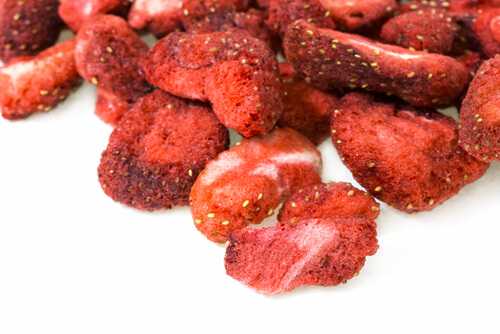Trail meals are among the most important things hikers consider when planning a long backpacking trip. Backpackers require lots of calories to fuel their bodies and maintain a high energy level while on the trail.
All backpackers have their own ideas regarding the “best” trail foods, but all agree that meals for trips longer than a weekend must be calorie-dense, nutritious and lightweight. This critical weight limitation leaves the hiker with two options for preparing meals on the trail: Dehydrated foods and freeze-dried food.
What is Dehydrated Food?
Food dehydration is simple and has been practiced for hundreds of years. Dehydrated food is produced by using heat to slowly remove the water in fresh food. Generations of agrarian cultures relied on air drying, sun drying, and smoking to dehydrate food and preserve their harvest.
Today, conveniently packaged dehydrated foods are available through online outlets such as Harmony House and Packit Gourmet, but many backpackers dehydrate their own ingredients using a home dehydrator or convection oven. Home dehydration, though time consuming, is a low-cost method that enables people to control the ingredients and flavors that comprise their trail meals.
5 Advantages of Dehydrated Foods
1. Dehydrated foods are lightweight
All fresh foods contain water, which accounts for most of the food’s weight. The dehydration process eliminates nearly 98% of the water from fresh food. Removing the water makes the food lighter and easier to carry.
2. Dehydrated foods take up less space in a backpack
When water is removed from fruits and vegetables through dehydration, the plant cells shrink and compact, making the food significantly smaller. This is a major advantage over freeze-drying because.
Freeze–dried foods retain their natural shape and size. The equation is simple: The smaller size allows you to fit more food in your pack. Although dehydrated food may take on a shriveled-looking appearance after dehydration, it will “plump up” quickly when added to hot water.
3. Dehydrated foods have a long shelf-life
Dehydrated foods are ideal for backpacking because they do not require refrigeration. They can be stored safely at room temperature for extended periods of time, and are not affected by the temperature extremes a backpacker may encounter on a long distance hike. Of course, all food is better when consumed shortly after preparation, but properly stored dehydrated food will retain flavor and can be safely eaten for many years.
4. Dehydrated food retains its flavor
The dehydration process has little effect on the taste of fruits and vegetables. However, the texture of the food may change somewhat and take on a slightly chewy character. Dehydrated foods lend themselves to meals or dishes that require longer cooking times and are particularly useful in stews, soups, gravies, and sauces.
5. Dehydrated food is cost effective
Many backpackers use a home dehydrator to prepare their own meal ingredients. Home dehydration is easy and does not require expensive, specialized equipment. Although it is time consuming, home dehydration is a low-cost alternative that enables people to control the flavors and ingredients in their trail meals.
More: 7 Tips for Backpackers
What is Freeze-Dried Food?
Freeze-drying, like dehydration, preserves and reduces the weight of food by removing nearly all the water. That is where the similarity ends. The Freeze-drying process uses specialized equipment to remove water from food after the food has been frozen, by rapidly changing the temperature and pressure in a freeze-drying chamber.
The ice is evaporated at temperatures approaching -50 degrees F. Approximately 98% of the moistures converted from a solid to a gas without ever becoming a liquid.
The rapid nature of freeze-drying allows the cell structure of food to remain intact, preserving the nutrients, taste, texture, and color of the food. Though the special equipment needed to produce freeze-dried food makes it impractical for the average backpacker to “do-it-yourself”, freeze-dried foods are available online and at many retail outlets.
Several brands offer complete freeze-dried meals in a single pouch. Just add hot water to the pouch and you have an instant hot and hearty meal. Chili, chicken and rice, and pasta alfredo are just a few of the many pre-prepared meal options available to the backpacker.
4 Advantages of Freeze-Dried Foods
Freeze-dried foods have many of the same advantages as dehydrated foods but there are some significant differences.
1. Freeze-dried foods are lightweight
Removing 98% of the water through freeze-drying reduces a food’s weight by 70% to 90%, depending on the food type.
2. Dehydrated foods have a long shelf-life
Like dehydrated food, freeze-dried food is considered “shelf-stable” because all the moisture and oxygen has been removed. Freeze-dried food can be safely stored or carried in a backpack without refrigeration for long periods of time.
3. Freeze-dried foods retain taste and texture
Most people prefer the taste and texture of freeze-dried foods over that of dehydrated foods. Because very low levels of heat are used during the freeze-drying process, freeze-dried foods lose very little original aroma, taste, and texture. This represents the most significant advantage of freeze-dried foods over dehydrated foods.
4. Freeze-dried foods have faster cooking/rehydration times
Freeze-dried foods are extremely sensitive to moisture, typically rehydrating within minutes after exposure to water. They rehydrate quickly in hot or cold water, though some ingredients, such as meat, may take longer in cold water.
Also, most freeze-dried fruits and vegetables take on the crispy texture of potato chips, and can be eaten without adding water. This is not the case with dehydrated produce. Because freeze-dried foods rehydrate and cook quickly, they can often be added to meals towards the end of the cooking process, lending a crisp and fresh texture to trail meals.
Exposure to even small amounts of moisture affects the stability and sustainability of freeze-dried foods. It is important to store them in moisture proof containers. On the trail, backpackers should remove any air from reusable packages before storing unused freeze-dried foods.
Choosing ingredients for trail meals is a matter of personal preference and there is no right or wrong choice. Trial and error over time will teach you which trail foods you prefer. When planning for a long backpacking trip, many individuals incorporate a combination of dehydrated and freeze-dried ingredients and foods into their meal plans.
Certain individuals enjoy MREs (Meals Ready to Eat) for trail meals. MREs are the meals used by the military. They are meant to be eaten hot or cold, but many people find them an acquired taste, and only use them as a last resort.
Unsatisfactory meals can cast a pall over an otherwise great backpacking experience.
Do a home taste-test all foods you are planning on taking on the trail. Prepare them the same way you would while backpacking. Tweak your recipes and don’t take anything you do not enjoy.









